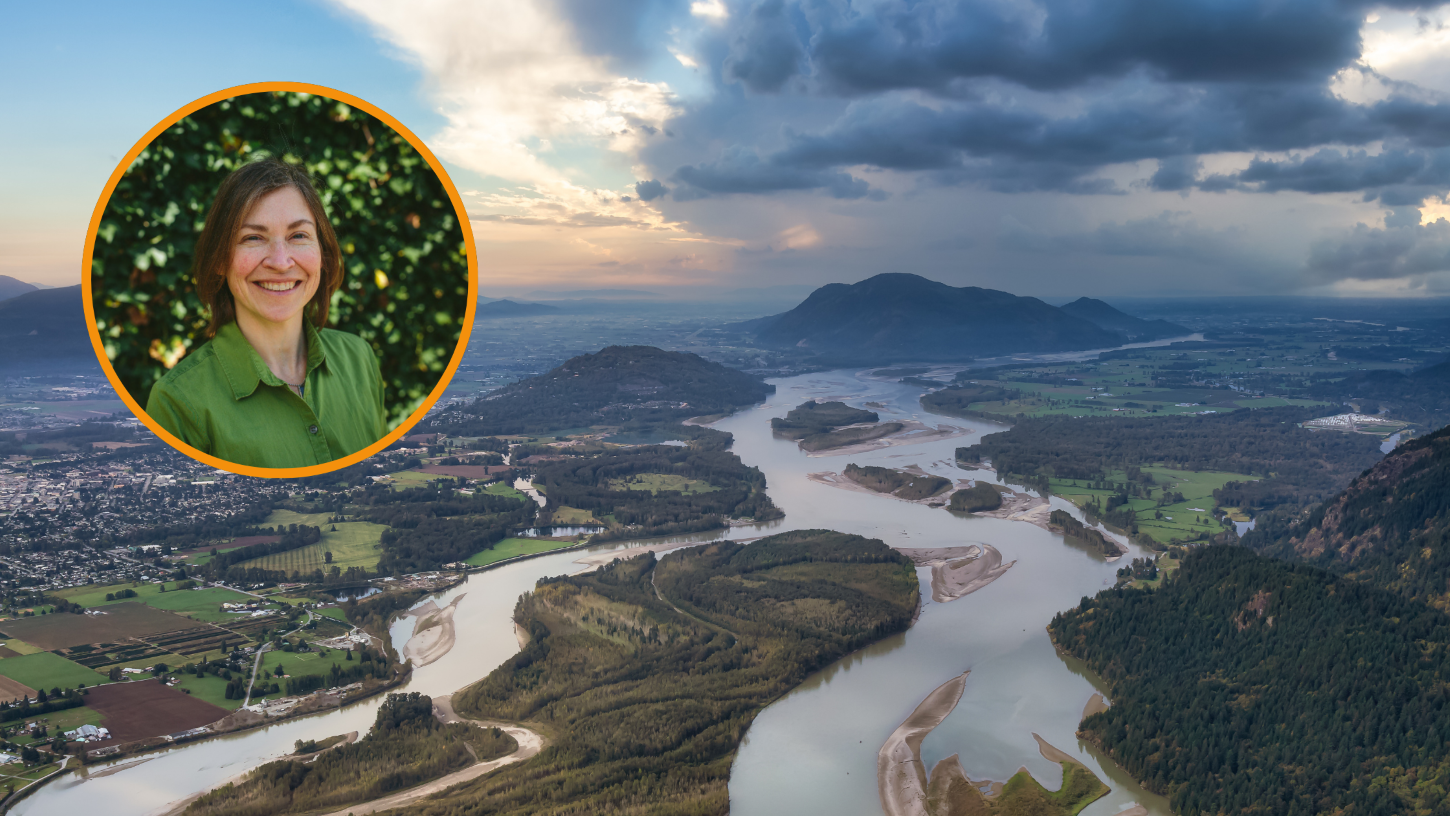
West Coast is working to support nature-based climate adaptation that not only makes our communities resilient but offers multiple benefits for the environment and community members. Our legal perspective helps us identify key barriers and opportunities for implementing solutions. And where issues cross physical and jurisdictional boundaries, we are facilitating collaboration and ways of working together that advance reconciliation and the implementation of the UN Declaration on the Rights of Indigenous Peoples (UNDRIP).
Recognizing that adaptation is a political, not just a technical process, West Coast supports deliberative workshops where governments and community members can evaluate risks and offer informed input into adaptation policies.
We spoke with Staff Lawyer Deborah Carlson to learn more about the work happening in West Coast’s Liveable Sustainable Communities Program.
Deborah joined West Coast in 2010 and works with communities in BC to develop legal frameworks that support healthy, low-impact urban areas, and community-based planning processes that start from our connection to the natural environment.
At West Coast she has focused on climate change challenges, and how communities can adapt and thrive with ecosystem-based responses.
Hi Deborah! Can you tell us about West Coast’s Liveable Sustainable Communities Program?
The Liveable Sustainable Communities (LSC) program currently works on two initiatives:
- Living Dike Roundtable for pilot projects in Boundary Bay – a series of pilot projects exploring how enhancement of the salt marsh in Boundary Bay can make the human communities and coastal ecosystems more resilient to a changing climate, including sea level rise. It’s an innovative, nature-based infrastructure initiative led by the City of Surrey, Semiahmoo First Nation and City of Delta, and West Coast is helping to support the interjurisdictional collaboration that makes it possible.
- Lower Fraser Floodplains Coalition – we are working with multi-disciplinary partners, including the First Nations-led Emergency Planning Secretariat, to support a principled, strategic approach to floodplain management in the Lower Fraser River region that advances reconciliation, long-term resilience and working with nature.
What is the goal of the Liveable Sustainable Communities Program? Why is it necessary?
If you live in a city, it can feel like “nature” is “out there”, somewhere, at the edge, or beyond the city. But we don’t really live in self-sustaining urban bubbles – we’re all still very much part of the big web of life, and relying on it for all the essentials, like air, water and food. Climate change reminds us of these connections, with summer droughts and heat events, wildfires, and flooding all becoming more frequent.
As well, we share our urban space: our cities are located in special places that are often desirable for other species too, and can be rich in biodiversity, like the Fraser River delta. Cities are also in First Nations territories and occupy lands and waters that have been stewarded for many millennia according to laws and practices that have supported rich cultures and sustainable economies.
Our work with LSC is to continue to reform the outdated regulation of our urban landscapes, which has grown out of some good ideas (managing sewage, access to schools and health care, and marketplaces for goods, services and ideas) and some not-so-good ideas (impervious surfaces, urban sprawl and entrenchment of social inequities).
We support regulation and planning that ensures that our ecosystem support systems are strong, that we are preparing for climate change, that we are good neighbours to other living beings like salmon, and that we are advancing reconciliation and implementing UNDRIP.
What excites you most about this work?
This is a time of opportunity for working collaboratively, with greater understanding in settler governments about the need to work with nature. The adoption of UNDRIP by the federal and provincial governments also provides a practical foundation for the work of reconciliation, as a kind of toolbox for place-based recognition and implementation of the inherent authority and rights of First Nations, creating space for dialogue and action.
What are some recent milestones for the Liveable Sustainable Communities Program?
- West Coast helped coordinate a site visit to the construction and enhancement sites for the first two pilot phases of the Living Dike project in Boundary Bay – a unique nature-based solution for flood management. West Coast co-chairs, with the Emergency Planning Secretariat, an interjurisdictional roundtable that supports the project. First pilot projects of the Living Dike were planted in Spring 2023, and are surviving the storms so far!
- In June 2023, West Coast presented at the Commission on Environmental Co-operation 30th Session in Victoria, BC, speaking on a panel about Urban Climate Adaptation and Environmental Justice.
- In June 2023, West Coast and coalition partners hosted the Lower Fraser Floodplains Forum, a day-long gathering for leaders from First Nations, local and provincial governments, federal and provincial agencies, farm associations and stakeholders to begin dialogue around solutions for flood resilience.
- In March 2024, we began the next phase of this work – hosting sub-regional gatherings with First Nations and local governments to continue these collaborative discussions and help pool resources and expertise.
What is your hope for the future of this work?
I am excited about the next steps in our work with the Lower Fraser Floodplains Coalition. This unique collaboration is creating much-needed space for dialogue and bringing a diverse range of experts and community members together to catalyze nature-based flood management.
- Read the Lower Fraser Floodplains Forum 2023 Dialogue on Regional Action Report
- Watch a recording of the forum
- Read Deborah Carlson's bio
- To support West Coast’s work, please make a donation today
West Coast Environmental Law Program Spotlight Series:
- Strong Canadian Environmental Laws with Anna Johnston
- Liveable Sustainable Communities with Deborah Carlson
- Sue Big Oil with Andrew Gage
- Revitalizing Indigenous Law for Land, Air and Water (RELAW) with Katłıà Lafferty and Rayanna Seymour-Hourie
- Community Outreach with Tra Mi Do Le
- Marine Protection with Georgia Lloyd-Smith